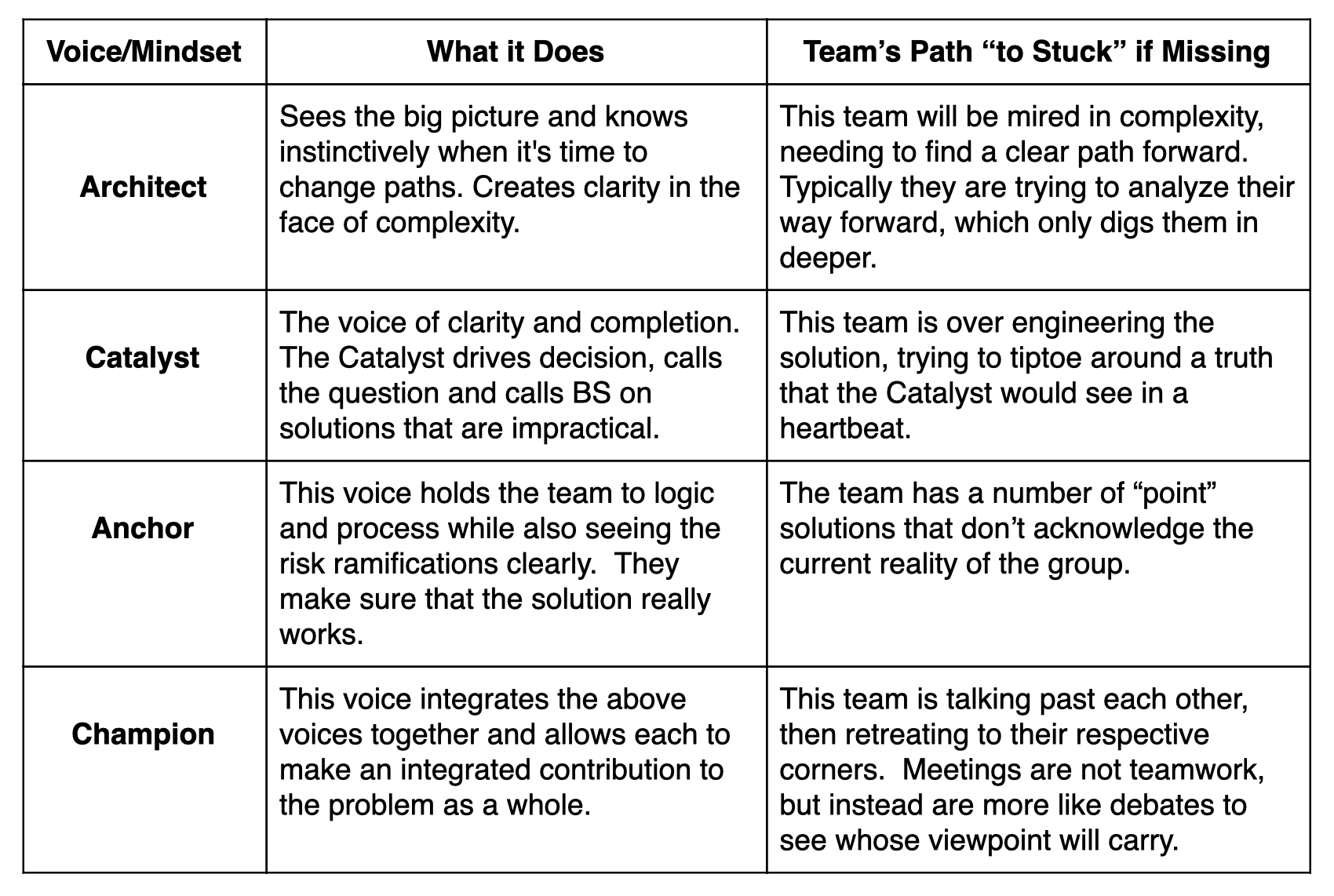It happens to every group of people working to achieve a common goal: there are periods of great progress and alignment and cycles where things are just not working. Making a move when things are not working seems straightforward. But as we’ll discover below, it’s harder than it appears to fix the deeper issue that lead to real breakthroughs.
I’ve been at several client engagements recently where the team has begun with a flourish, only to find themselves bogged down in ambiguity and indecision a few weeks into the journey. This is very common for larger firms who are superb at driving scale and optimization. The issue is that when you are discovering new things, these natural strengths lead to barriers. We even have a common term for it: analysis paralysis.
This leads to delay, and regardless of the firm’s size, it costs them money, time and resources. The insidious thing is that these patterns tend to recur – ringing up ever bigger tabs.
When this situation plays out, conventional advice tells you to do the following:
- Revisit the “Why.” This is usually done using a silent brainstorm. An easy way to do this is to pass out sticky notes and ask everyone to put one bullet point per note: Why does this work need to be done? How will our future be better?
- Get really clear on the “What.” The more specific you can be here the better. A very simple and strong tool is a spreadsheet projected that has four columns: What is the attribute? What is the minimum level that will meet our needs? What is the target value? What would amazing look like?
- Now do some work on the “How.” What is the next step?
And guess what?
The team will move forward a short increment and then get stuck again.
There is nothing wrong with the above strategy, but if it’s the only thing you do, progress will be short lived. What you have really done is substitute facilitation for a shortfall in the team. To truly reestablish momentum, you need to do something first.
To get a team on a sustainable track you need to move your observation up one level so that you’re able to see clearly what’s not present. To achieve this, you’ll need a high-functioning team that has four clear voices. If anyone is not present, the team will stall (in a specific way).
By fixing the root issue, you will put the team back on track, and significantly raise its performance level.
Leadership voices as described above are very powerful tools leading to insights that can unlock organizational performance across all aspects of market, product and operations work.
Looking for more insight on cross-functional teams and the four voices? Check out there posts (here, here and here).
If you find yourself stuck in one of the ways described above, I’d love to help you identify the missing voice and get things back on track. Please give me a call at 847-651-1014 or use this link to set up a complimentary discussion.
Related posts you can benefit from…



